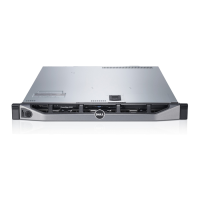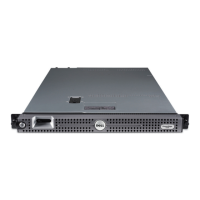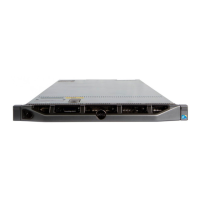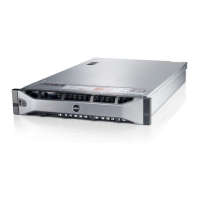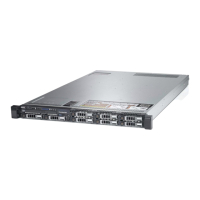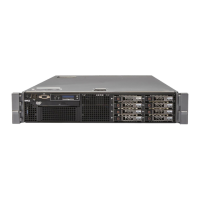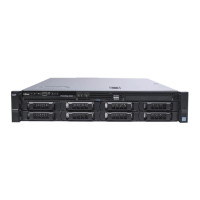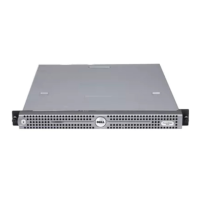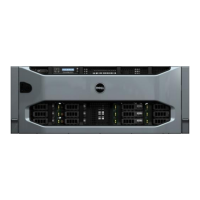Option Description
peripheral card prevents booting into the operating system or causes delays in system startup. If the slot is
disabled, both the Option ROM and UEFI drivers are disabled.
Serial Communication details
The Serial Communication screen details are explained as follows:
Option Description
Serial
Communication
Selects serial communication devices (Serial Device 1 and Serial Device 2) in BIOS. BIOS console redirection
can also be enabled and the port address can be specied. This option is set to Auto by default.
Serial Port Address Enables you to set the port address for serial devices. This option is set to Serial Device 1=COM2, Serial
Device 2=COM1 by default.
NOTE: You can use only Serial Device 2 for the Serial Over LAN (SOL) feature. To use console
redirection by SOL, congure the same port address for console redirection and the serial device.
NOTE: Every time the system boots, the BIOS syncs the serial MUX setting saved in iDRAC. The
serial MUX setting can independently be changed in iDRAC. Loading the BIOS default settings
from within the BIOS setup utility may not always revert the serial MUX setting to the default
setting of Serial Device 1.
External Serial
Connector
Enables you to associate the External Serial Connector to Serial Device 1, Serial Device 2, or the Remote
Access Device by using this option.
NOTE: Only Serial Device 2 can be used for Serial Over LAN (SOL). To use console redirection by
SOL, congure the same port address for console redirection and the serial device.
NOTE: Every time the system boots, the BIOS syncs the serial MUX setting saved in iDRAC. The
serial MUX setting can independently be changed in iDRAC. Loading the BIOS default settings
from within the BIOS setup utility may not always revert this setting to the default setting of Serial
Device 1.
Failsafe Baud Rate Species the failsafe baud rate for console redirection. The BIOS attempts to determine the baud rate
automatically. This failsafe baud rate is used only if the attempt fails, and the value must not be changed.
This option is set to 115200 by default.
Remote Terminal
Type
Sets the remote console terminal type. This option is set to VT 100/VT 220 by default.
Redirection After
Boot
Enables or disables the BIOS console redirection when the operating system is loaded. This option is set to
Enabled by default.
System Prole Settings details
The System Prole Settings screen details are explained as follows:
Option
Description
System Prole Sets the system prole. If you set the System Prole option to a mode other than Custom, the BIOS
automatically sets the rest of the options. You can only change the rest of the options if the mode is set to
Custom. This option is set to Performance Per Watt (OS).
NOTE: All the parameters on the system prole setting screen are available only when the System
Prole
option is set to Custom.
CPU Power
Management
Sets the CPU power management. This option is set to OS DBPM by default.
41
